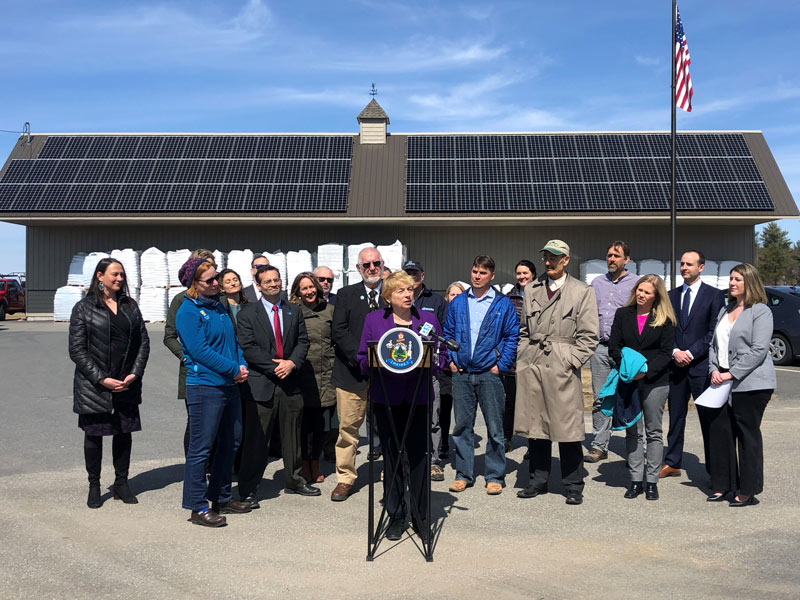In today’s edition of sentences we would have never thought we’d be typing just one year ago, the state of Maine has all but passed its third pro-renewable bill this month, the first of which to be specifically tied to solar.
That bill, needing only a few remaining procedural votes in each chamber and approval from Governor Janet Mills (D), is LD 1711, An Act To Promote Solar Energy Projects and Distributed Generation Resources in Maine. Yesterday, LD 1711 easily cleared the Maine Senate by a 32-2 vote, before waltzing right through the State House shortly after, by a 93-52 vote.
And with those votes, assuming there are no major road blocks between the bill’s current standing and the tip of the governor’s pen, Maine solar is back from the brink.
Under LD 1711, the state will look to develop more than 400 MW of distributed solar, as well as grow access to community solar farms. What’s so paramount about LD 1711 is the focus that the bill has on distributed solar. LD 1711 specifically calls for 150 MW of the aforementioned 400 MW to be put towards distributed solar for commercial and industrial (C&I) solar projects.
The remaining 250 MW are to be developed as “Large-scale shared distributed generation resources,” with that designation meaning that the project is 50 MW or larger in capacity. The customer base of these larger facilities can be broken down in a number of ways.
Ideally, 50% of the total capacity would be subscribed by subscriptions of 25 kilowatts or less. This figure can go as low as 20% of the total capacity, if subscriptions from a municipality or units of municipal government account for more than 30% of total capacity. At the same time, subscriptions from a municipality can just as well account for more than 50% of total capacity. However, 10% of each large-scale project must be subscribed by households with low or moderate income or by organizations serving low or moderate income households.
The only exception to this statute is in those 50% municipal subscription instances, in which case the low or moderate income requirement falls to 5%. Municipal subscriptions also cannot exceed 70% of total capacity.
In all, the solicitation of these 400 MW are expected to generate over 500 new jobs in the solar industry, a nearly 50% increase on the estimated 650 currently in the state.
And this is just the beginning. Just six months ago, Maine was hopelessly in the cellar of solar development. It’d be easy to say there’s not telling what the future holds, but that just isn’t true. The future holds solar, lots of it. The fun part is the unknown: how much?
This content is protected by copyright and may not be reused. If you want to cooperate with us and would like to reuse some of our content, please contact: editors@pv-magazine.com.









By submitting this form you agree to pv magazine using your data for the purposes of publishing your comment.
Your personal data will only be disclosed or otherwise transmitted to third parties for the purposes of spam filtering or if this is necessary for technical maintenance of the website. Any other transfer to third parties will not take place unless this is justified on the basis of applicable data protection regulations or if pv magazine is legally obliged to do so.
You may revoke this consent at any time with effect for the future, in which case your personal data will be deleted immediately. Otherwise, your data will be deleted if pv magazine has processed your request or the purpose of data storage is fulfilled.
Further information on data privacy can be found in our Data Protection Policy.